How to Choose the Best Ethernet Cable for Your LAN
Last Updated on April 2, 2024
Choosing the Right Cables for Your Network
Your business relies on its network for everything from email and file sharing to powering cloud-based applications. It's the invisible infrastructure that keeps your operations running smoothly. So, imagine this: slow file transfers, lagging video conferences, and constant downtime due to unreliable connections. These issues can directly translate to lost productivity and frustrated employees.
The cornerstone of any network is its cabling. While often overlooked, the right ethernet cables distinguish between a sluggish, unreliable network and one that delivers the speed and stability your business needs. This guide breaks down the factors to consider when choosing ethernet cables. We'll uncover the differences between cable types, help you navigate the technical jargon, and provide actionable insights so you get the optimal network your business deserves.
Key takeaway: Choosing the right cable isn't just about tech specs. It's about ensuring seamless business operations and positioning yourself for future growth.
Table of Contents
- 1 Understanding Cable Categories
- 2 Understanding Specialized Cables: Cat7, Cat8, and Beyond
- 3 Shielding: When It Matters and When It Doesn't
- 4 Cable Jackets: Protecting Your Network (And Your Building!)
- 5 Choosing the Right Cable: Balancing Needs and Budget
- 6 Fiber Optic vs. Ethernet Cables
- 7 Conclusion: Invest in the Right Cables, Invest in Your Business
- 8 FAQ:
Understanding Cable Categories
Cat5e, Cat6, and Cat6A: What's the Difference?
Ethernet cables come in various categories, with Cat5e, Cat6, and Cat6A being the most common for businesses in 2024. Let's delve deeper into understanding their differences:
- Cat5e: The Reliable Workhorse: Suitable for most basic home networks and less demanding business settings, Cat5e cables handle speeds up to 1 Gbps and distances up to 100 meters (328 ft). While affordable, Cat5e was primarily designed for older networking standards and may bottleneck newer, high-bandwidth applications requiring consistent speeds.
- Cat6: The Performance Upgrade: Designed for faster speeds and reduced signal interference, Cat6 supports 10 Gbps speeds over shorter distances (up to 55m/180ft). Its improved construction, including thicker conductors and tighter twists, minimizes crosstalk (unwanted signal bleed between cable pairs), resulting in a more stable and reliable connection.
- Cat6A: The Future-Proof Choice: Boasting superior performance and shielding, Cat6A enables 10 Gbps speeds over longer distances (up to 100m/328ft). Its additional shielding enhances protection from electromagnetic interference (EMI) and reduces crosstalk, making it ideal for environments with heavy electrical equipment or demanding network setups.
| Category | Max Speed | Max Distance | Typical Applications |
|---|---|---|---|
| Cat5e | 1 Gbps | 100 meters (328 ft) | Basic networks, small offices, home use |
| Cat6 | 10 Gbps | 55 meters (180 ft) | High-speed networks, data-intensive applications |
| Cat6A | 10 Gbps | 100 meters (328 ft) | Demanding networks, future expansion, long-distance runs |
Important Note: Even top-tier cables like Cat6A have limitations. Fiber optic cables often provide the most reliable solution for extreme bandwidth needs over long distances.
Key takeaway: Choosing the right category is about aligning your current bandwidth needs, potential interference, and anticipated future growth for optimal network performance and longevity. Don't underestimate the potential for future upgrades – investing in the right cables now can save time and headaches down the road.
Understanding Specialized Cables: Cat7, Cat8, and Beyond
When to Consider Cat7 and Cat8 (and a Note on Cat7)
While Cat5e, Cat6, and Cat6a generally address most business needs, specialized cables like Cat7 and Cat8 exist for high-performance networks. Let's clarify them:
- Cat7 (Not an Official Standard): It's important to note that Cat7 isn't an officially recognized standard by industry bodies (TIA/EIA). While it offers higher bandwidth and shielding than Cat6a, it uses a proprietary connector (not the standard RJ45), adding complexity to the installation. Considering Cat7, carefully weigh its benefits against the lack of standardization and increased costs.
- Cat8: Cat8 is the newest ethernet cable standard, designed for ultra-high-speed transmissions (up to 40 Gbps) within short distances (up to 30 meters/98ft). Cat8 primarily targets data centers and hyper-specialized networking needs.
Why This Guide Focuses on Cat5e, Cat6, and Cat6a
- Accessibility and Compatibility: Cat5e, Cat6, and Cat6a utilize the standard RJ45 connector, making them universally compatible and easier to install.
- Affordability: These categories offer an excellent balance of cost, performance, and future-proofing for most businesses.
- Need: The bandwidth and shielding offered by Cat5e, Cat6, and Cat6a typically meet and exceed the requirements of the average business environment.
Key Takeaway: Unless you operate a data center or have extremely specialized networking needs, Cat7 and Cat8 might be overkill for your infrastructure. In most cases, Cat5e, Cat6, or Cat6a will provide the performance and reliability you need without the additional cost or complexity associated with non-standard options.
Shielding: When It Matters and When It Doesn't
Shielded vs. Unshielded
You may have seen shielded (STP or FTP) and unshielded (UTP) ethernet cables. While most people won't need the protection of shielded cables, it's essential to grasp the difference:
- Unshielded Twisted Pair (UTP): The most common type of ethernet cable, UTP relies on carefully twisting wire pairs within the cable to counteract common electromagnetic interference (EMI). It's cost-effective, flexible, and easy to install.
- Shielded Twisted Pair (STP) or Foiled Twisted Pair (FTP): Shielded cables add a conductive material surrounding the wire pairs or the entire cable. This shield protects against stronger EMI sources, like heavy machinery or powerful electrical equipment. However, shielded cables are typically more expensive, bulkier, and less flexible, making them harder to work with.
Key Considerations:
- Environment: Do you operate in an environment with strong electrical interference sources? Shielded cables may benefit industrial settings, workshops, or areas with heavy electrical wiring.
- Proximity to interference: Are your cables close to power lines, fluorescent lights, or other EMI sources? Shielding may be a wise investment if these factors are unavoidable.
- Data sensitivity: If your network handles critical or sensitive data, a shielded cable protects against signal disruption.
Important Note: UTP cables provide adequate interference protection in most homes and standard offices. Don't overspend on shielded cables unless your environment specifically warrants them.
Key Takeaway: The decision to use shielded or unshielded cables hinges on your specific environment and your priority of minimizing potential interference.
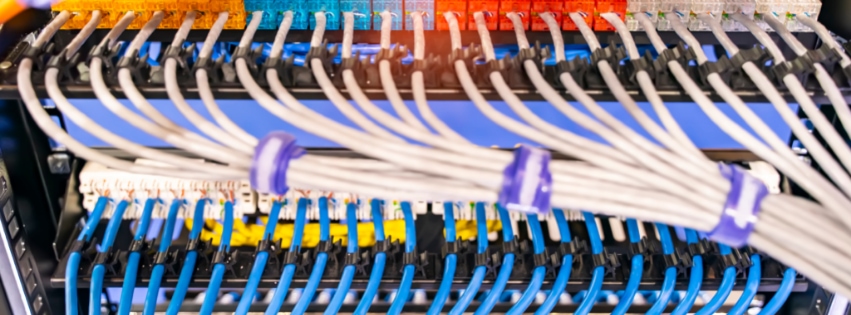
Cable Jackets: Protecting Your Network (And Your Building!)
Ethernet cables aren't just about the wires inside; the outer jacket plays a vital role. Different jacket types are designed for specific environments and adhere to strict safety regulations. Here's the breakdown of what you need to know:
- Riser (CMR): This flame-retardant jacket type is designed for in-wall installations. It minimizes the spread of fire within walls, which is crucial for buildings with multiple floors. Think of riser cables as essential for vertical runs between floors.
- Plenum (CMP): Plenum-rated cables meet the highest fire safety standards. They're designed for plenum spaces – typically the air-handling spaces above drop ceilings in commercial buildings. Plenum jackets minimize flame spread and emit less toxic smoke, which is a critical safety consideration in large buildings.
- Outdoor (CMX): Designed to withstand the elements, outdoor cables feature water-resistant jackets constructed from materials like LLDPE (Linear Low-Density Polyethylene). They suit external applications like running cables between buildings or along exterior walls.
- Direct Burial (CMG): These cables go beyond outdoor cables, incorporating extra protection like waterproof tape or gel filling. Direct burial cables are a safe and durable choice if you need to run cables underground.
Important Safety Note: Using the wrong cable type can have serious safety consequences and violate building codes. It's vital to understand building specifics and local regulations before cable installation.
Key Takeaway: Cable jackets aren't just about protecting the cable itself; they play a crucial role in fire safety and compliance. Always choose the appropriate jacket type for your installation environment to protect both your network and the overall safety of your building.
Choosing the Right Cable: Balancing Needs and Budget
Selecting the ideal ethernet cable for your business network isn't simple. It requires careful consideration of several factors to ensure your investment provides the performance and longevity you need. Let's break down the critical elements for informed decision-making:
Factors to Consider
- Speed and Bandwidth: A realistic assessment of your current and future data transfer needs is paramount. Do you frequently handle large graphic files like a small design firm or rely on seamless video conferencing for healthcare consultations? Choosing Cat6 or Cat6a cabling ensures smooth, high-bandwidth connections, avoiding the potential limitations of Cat5e.
- Distance: Longer cable runs, especially between devices spread out over a larger area, might necessitate Cat6a or shielded cables to maintain optimal signal quality.
- Environment and Interference: If your workspace has strong EMI sources, like in a manufacturing facility with heavy machinery, choosing shielded cables protects your network from disruptions. Similarly, strict fire safety regulations in various industries must be considered when selecting the appropriate jacket type (plenum vs. riser).
- Future-Proofing: Projecting your business growth is crucial for selecting the right cable category. If you're a fast-growing tech startup expecting new hires and increased network traffic, Cat6a cabling positions you well for those expanding needs without the future hassle of premature network upgrades.
- Budget: Balancing performance with cost is vital. If you're confident that your network demands won't spike quickly, Cat5e might be a feasible short-term solution. However, investing in higher-performance cabling upfront can provide better long-term value and avoid potential downtime due to inadequate infrastructure.
Key Takeaway: Choosing the right cable is all about alignment. The most appropriate cable for your network depends on a careful balance of your business's specific requirements, environment, anticipated growth, and budget.
Additional Considerations:
- Professional Installation: Complex network setups often benefit from certified cabling experts to ensure proper installation and optimize long-term performance and reliability.
- Labeling and Documentation: A well-organized labeling system will save you time and frustration with future troubleshooting or maintenance.
- Considering Fiber Optic: For environments requiring maximum bandwidth, longest distances, or the utmost security, fiber optic cabling might be worth exploring.
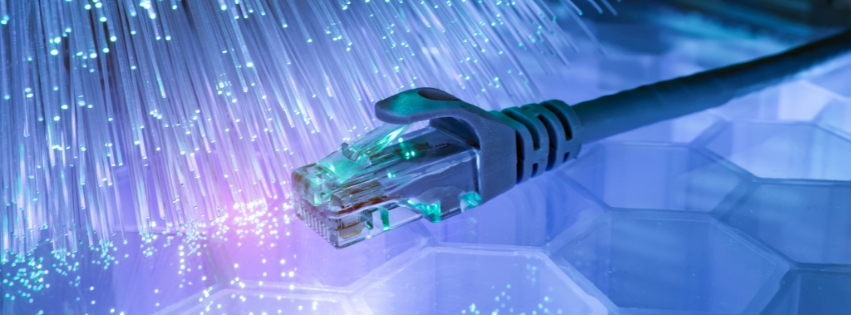
Fiber Optic vs. Ethernet Cables
Traditionally, copper ethernet cables have been the workhorse for connecting network devices. But what if copper isn't enough for your needs? This section explores the key differences between fiber optic and ethernet cables to help you decide which option is best.
Copper Ethernet: Reliable, Familiar, But Limited
- Distance: A standard copper ethernet cable (Cat6a) can reliably transmit data up to 328 feet (100 meters). Extending beyond this distance requires additional equipment like switches, making things complex.
- Speed: Cat6a supports up to 10 gigabits per second (Gbps) over its maximum distance. Newer Cat8 cables improve upon this but still have limitations at longer distances.
- Installation: Copper cables are generally thicker and easier to terminate (connect) than fiber optic cables, especially using pre-terminated options.
- Power Delivery: Copper ethernet cables can deliver power over the same cable using Power over Ethernet (PoE) technology. This is ideal for powering devices like IP phones or security cameras.
Fiber Optic Cables: Blazing Speeds and Long Distances
- Distance: Fiber optic cables excel in long-distance applications. Single-mode fiber can transmit data for kilometers (miles) with minimal signal loss, making them ideal for connecting buildings or remote locations.
- Speed: Fiber optic cables can have much higher speeds than copper cables. They can readily handle 10 Gbps and even 100 Gbps over longer distances.
- Installation: Fiber optic cables are thinner and lighter than copper cables, but their delicate nature requires more specialized skills and tools for termination.
- Power Delivery: Fiber optic cables transmit light signals and cannot carry electrical current. This means they cannot deliver power over the same cable as copper (PoE).
Choosing Between Fiber and Copper
The ideal cable type depends on your specific needs. Here's a quick guideline:
- Choose copper ethernet for: Short distances (under 328 feet), existing copper infrastructure, PoE applications, and cost-effective solutions for moderate speeds (under 10 Gbps).
- Choose fiber optic for: Long distances (beyond 328 feet), high-speed data transmission (10 Gbps and above), future-proofing your network for potential upgrades, and environments requiring EMI immunity.
Both copper ethernet and fiber optic cables have their strengths and weaknesses. Understanding these differences will empower you to make informed decisions when designing or upgrading your network infrastructure. Consulting with a qualified network cabling specialist is always recommended if you're unsure which cable type is best for your needs.
Conclusion: Invest in the Right Cables, Invest in Your Business
Network cabling is the often-overlooked backbone of successful businesses. It may seem like merely a collection of wires, but the right choice empowers your operations with speed, reliability, and scalability. Remember, selecting ethernet cables isn't just about buying the “latest” or “most expensive” option. Consider your current bandwidth requirements, anticipated future growth, the physical layout of your network, and any environmental constraints or safety regulations. A strategic cabling approach aligns with your business's specific goals, setting up your network to support your success rather than hinder it.
Key Takeaway: Consider your network cabling as an investment, not just an expense. The time you invest in careful planning and informed decision-making will pay dividends in efficient operations, seamless communication, and adaptability for future growth.
If you need help upgrading your network or planning a new installation, don't hesitate to consult with a qualified network cabling contractor. Their expertise ensures you get the most out of your network infrastructure, positioning your business for long-term success.
FAQ:
My internet speed is slow. Will a better cable fix it?
Sometimes. If your cable is very old (Cat5 or earlier) or heavily damaged, upgrading to a modern cable (Cat6 or Cat6a) could improve your internet experience. However, a new cable won't magically increase your speed if your internet subscription speed is the limiting factor (e.g., only 20 Mbps service). Think of your cable and internet plan as a team.
Do different cable colors mean anything?
Yes, often! While basic cables may not have color variations, the jacket color frequently indicates specific properties. Blue cables are common for general network use, while yellow or orange might signify specific fire ratings or outdoor suitability. Always check the manufacturer's specifications and markings on the cable for precise details.
Should I go with Cat6 or Cat6a for my home office?
For most home offices, Cat6 offers a great balance of performance and cost. If your setup involves frequent large file transfers or you anticipate a significant network upgrade involving 10Gbps speeds in the near future, then Cat6a is a wise choice for future-proofing.
Can I mix different cable categories (e.g., Cat5e and Cat6) in my network?
Technically, yes, but it's not ideal. Your network's overall speed and performance will be limited to the slowest category cable used. Aim for consistency with the highest category possible within your budget for optimal results.
Im setting up a network in a warehouse setting. What specific considerations should I have?
Industrial settings often have strong EMI sources. Consider shielded (STP or FTP) cables to minimize disruption. Also, choose cable jackets that comply with industry-specific fire safety regulations and are rated to withstand harsh factory conditions.
Can I run ethernet cables through my walls or ceiling?
Yes, but it's crucial to use the correct cable type. For in-wall runs, riser-rated (CMR) cables are mandatory. Plenum-rated (CMP) cables are required in air-handling spaces like drop ceilings. Always check local building codes for any additional requirements.
Im confused by all the technical jargon. Where can I get personalized advice?
Certified network cabling specialists are the best way to navigate the complexities of choosing the right cables. They assess your specific needs, environment, and budget to develop a customized cabling solution that perfectly suits your business.
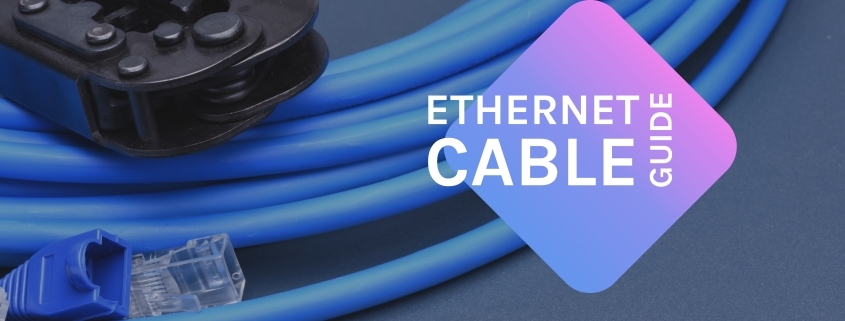
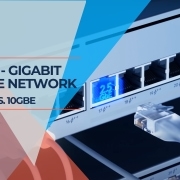


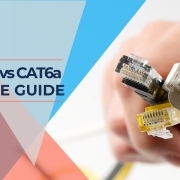
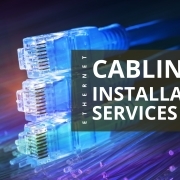
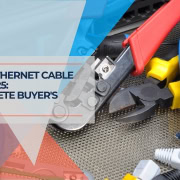

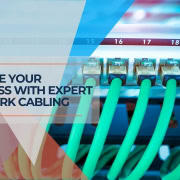


Leave a Reply
Want to join the discussion?Feel free to contribute!